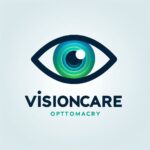
Understanding Hyperopia: Vision Correction Tips
Do you squint when you try to read small print? Or get eye strain from looking at your computer too long? If yes, you might know about hyperopia, also called farsightedness.
Hyperopia makes it hard to see things close up clearly. It happens when the eye is too short or the cornea is not curved enough. As a result, light doesn’t focus properly, making things up close seem blurry.
The good news? There are ways to fix hyperopia and make your vision better. This article will look at its signs, what causes it, and how it’s treated. We’ll also check out surgery and other options for dealing with hyperopia.
Key Takeaways:
- Hyperopia, or farsightedness, makes it hard to see nearby objects clearly.
- Signs of hyperopia include fuzzy vision, trouble reading, and eye tiredness.
- It can run in families and cause other eye problems like a lazy eye.
- Glasses, contacts, or surgery can help, depending on what you prefer and how bad it is.
- Getting your eyes checked often is really important to catch any problems early.
Symptoms and Causes of Hyperopia
Hyperopia, or farsightedness, makes things up close look blurry. It can make daily activities harder. You might find it tough to read or see small print.
Blurred vision when looking close, tire more easily, and feel eye strain are common with hyperopia. You might also feel dull eye throbs or find yourself squinting a lot.
If you have hyperopia, seeing up close is hard. You might see double when reading or looking at near things. Kids with it might rub their eyes often or avoid reading.
So, what’s behind hyperopia? It happens when the eye is too short or the cornea too flat. This makes light not focus correctly on the retina.
Hyperopia can run in families. Some genetic issues might make hyperopia more likely. If hyperopia is common in your family, you might be at risk too.
Common Symptoms of Hyperopia:
- Blurry vision, especially up close
- Difficulty reading
- Double vision when reading
- Fatigue at night
- Dull eye pain
- Eye strain
- Squinting
Recognizing hyperopia early is crucial for avoiding complications. Getting regular eye checks helps. An eye doctor can diagnose hyperopia and talk about treatment options with you.
Complications of Hyperopia and the Importance of Early Detection
Hyperopia, also known as farsightedness, can bring about troubles that affect how we see and how our eyes line up. It often leads to two main issues: amblyopia, or ‘lazy eye’, and strabismus, which means the eyes don’t look in the same place.
Amblyopia happens when one eye is favored by the brain. This makes the other eye weaker, causing unclear vision. Kids with severe farsightedness might develop amblyopia if not corrected early. Fixing this issue soon is crucial to avoid lasting vision loss.
Strabismus is when your eyes don’t parallelly look straight ahead. Hyperopia can make one eye more farsighted, which might make the eyes not match up. Strabismus affects how your eyes look and might cause double vision. It also makes judging depth harder.
Spotting these problems early is key to their effective management. Having regular eye check-ups, especially in childhood, helps catch hyperopia and its troubles before they worsen. An eye doctor can check your eyes’ power to see, how they line up, and their general health. If amblyopia or strabismus is found early, steps can be taken to fix it, saving vision and bettering eye alignment.
Make regular eye tests a top priority for yourself and your loved ones. This simple step can catch eye issues, like hyperopia, early, making treatments more successful. By handling hyperopia and its risks quickly, you protect your eyes for the future and keep your vision clear.
Treatment Options for Hyperopia
Eyeglasses
Eyeglasses are easy and simple for fixing hyperopia. They change how light goes into your eyes, making sure it focuses right on the retina. This lets you see clearly and lowers any eye discomfort from farsightedness.
Now, you can get eyeglasses with lenses that are light and thin. They make wearing glasses much more comfortable and look better too.
Contact Lenses
Refractive Surgery
If you want a more long-term solution, there’s refractive surgery. This kind of surgery can change the shape of your cornea to fix hyperopia. LASIK, LASEK, PRK, and ICL are some common refractive surgeries.
Each surgery method is a bit different. LASIK creates a cornea flap and reshapes it with a laser. LASEK reshapes without a flap. PRK removes the top cornea layer and then reshapes it. ICL puts an artificial lens in your eye. This helps correct your vision.
But remember, not everyone can have refractive surgery. It’s important to talk to an eye doctor about it. They can check your eyes to see if you can have the surgery safely.
Check the table below to see the main points of each treatment:
Treatment Option | Description |
|---|---|
Eyeglasses | A convenient and non-invasive option with various lens options available. |
Contact Lenses | Provide a wider field of view and can be a good alternative to eyeglasses. |
Refractive Surgery | A permanent solution that reshapes the cornea to correct hyperopia. |
Surgical Procedures for Hyperopia Correction
Have trouble seeing things up close? You might be farsighted, or hyperopia can cause this. Fortunately, several surgical procedures can help. They work by reshaping the cornea or adding a new lens. The main methods include LASIK, LASEK, PRK, and ICL surgery.
LASIK
LASEK
PRK
ICL Surgery
ICL surgery places a new, small lens in your eye. This lens helps refract light better, fixing your nearsightedness. It’s a good choice for those needing strong correction.
Choosing surgery for hyperopia isn’t simple. It’s wise to talk to a skilled eye doctor first. They can see what’s best for you. Remember, all surgeries come with risks. Make sure you know them all.
Other Surgical Procedures and Alternative Treatments
Aside from popular surgeries like LASIK and ICL, there are more ways to fix hyperopia. These include CK, LTK, and pIOL surgeries among others. Each option has its own benefits and things to consider.
If you’re looking into surgery, your eye doctor will explain these choices to you.
Conductive Keratoplasty (CK)
CK is a procedure that doesn’t use lasers but reshapes the cornea with radio waves. It’s best for those with a bit of farsightedness. This quick procedure can enhance your close-up vision without glasses or contacts.
Laser Thermal Keratoplasty (LTK)
LTK also doesn’t use lasers for correcting hyperopia. It reshapes the cornea using laser heat. It’s usually done for folks with mild to moderate farsightedness.
Phakic Intraocular Lens Implantation (pIOL)
pIOL places a new lens either in front of or behind the iris. It helps those with severe farsightedness or if laser surgery isn’t possible.
Refractive Lens Exchange (RLE)
RLE is like cataract surgery but for hyperopia. It takes out your natural lens and adds an artificial one. It’s good for people with a high degree of farsightedness or need their natural lens swapped out.
Small Incision Lenticule Extraction (SMILE)
SMILE is a newer, less invasive treatment for hyperopia correction. It includes a tiny corneal incision. This surgery is known for its quick healing and less pain during recovery.
Discuss with your eye doctor before deciding on a surgical option. They can guide you to what’s best for you.
Glasses or contacts are other choices. Glasses are easy and come in many styles. Contacts give a wide view that feels more natural. An eye doctor can help you pick the perfect type for you.
Conclusion
Hyperopia, or farsightedness, is a common eye problem affecting people of all ages. Knowing its symptoms and causes is key to early detection and care. This ensures better eye health.
Eyeglasses and contact lenses are great for fixing the problem and enhancing vision. If you want something more permanent, refractive surgeries like LASIK offer a lasting fix by reshaping the cornea.
Regular eye checkups are very important. They help doctors keep an eye on your hyperopia, make changes to your treatment when needed, and spot any other issues early. This is a big help in managing hyperopia well.
If you think you might have hyperopia, or if your eye health worries you, see an ophthalmologist. They can suggest the best plan for your specific case. Also, remember to get your eyes checked regularly. This is critical for keeping your eyes healthy and your vision clear for the future.
FAQ
What is hyperopia?
Hyperopia is when you see well far away but have trouble up close. It’s known as farsightedness. Many people deal with this.
What are the surgical procedures for hyperopia correction?
Signs of hyperopia include blurred up-close vision and trouble reading. It can also make your eyes feel tired or give you double vision while reading.
What causes hyperopia?
Hyperopia happens if your eyeball is too short or if your cornea is too flat. It can run in families. This makes it partly due to your genes.
Can hyperopia lead to complications?
Indeed, hyperopia can cause issues like a lazy eye or eyes that point different ways. These are more reasons to get your eyes checked regularly.
How can hyperopia be treated?
Treating hyperopia is easy. You can use eyeglasses, contact lenses, or have refractive surgery. These methods help correct your vision.
What are the surgical procedures for hyperopia correction?
Surgical options for hyperopia focus on reshaping your cornea. This includes LASIK, LASEK, PRK, and ICL surgeries. Each has its own benefits and considerations.
Are there alternative treatments for hyperopia?
Yes, other treatments besides surgery exist. These are CK, LTK, pIOL, RLE, and SMILE. You can also use glasses or contact lenses. There’s something for everyone.
How important are regular eye checkups for hyperopia?
Eye checkups are crucial if you have hyperopia. They help you monitor your eyes and treat any issues early on. This can prevent complications.
